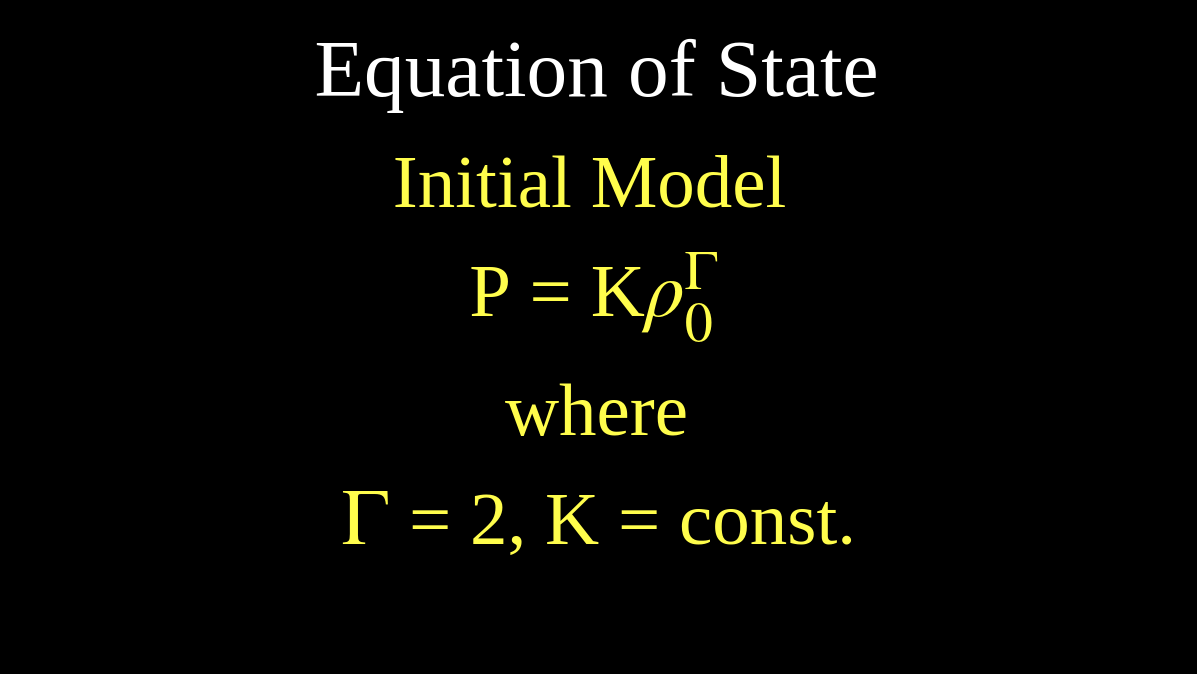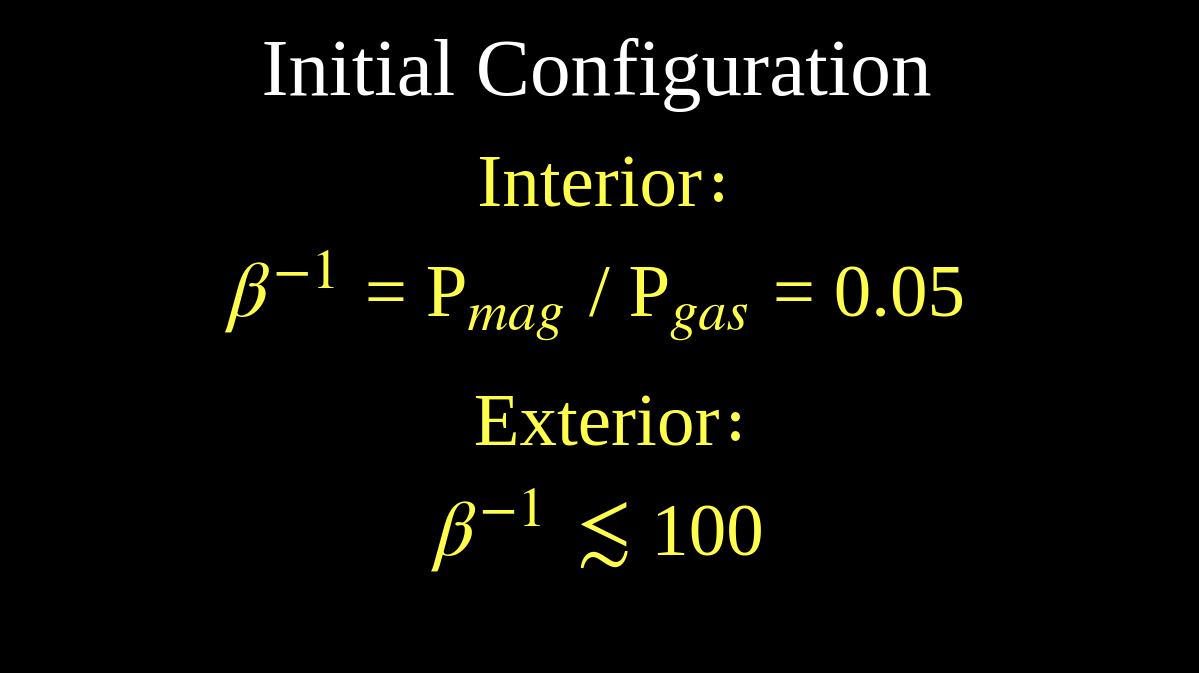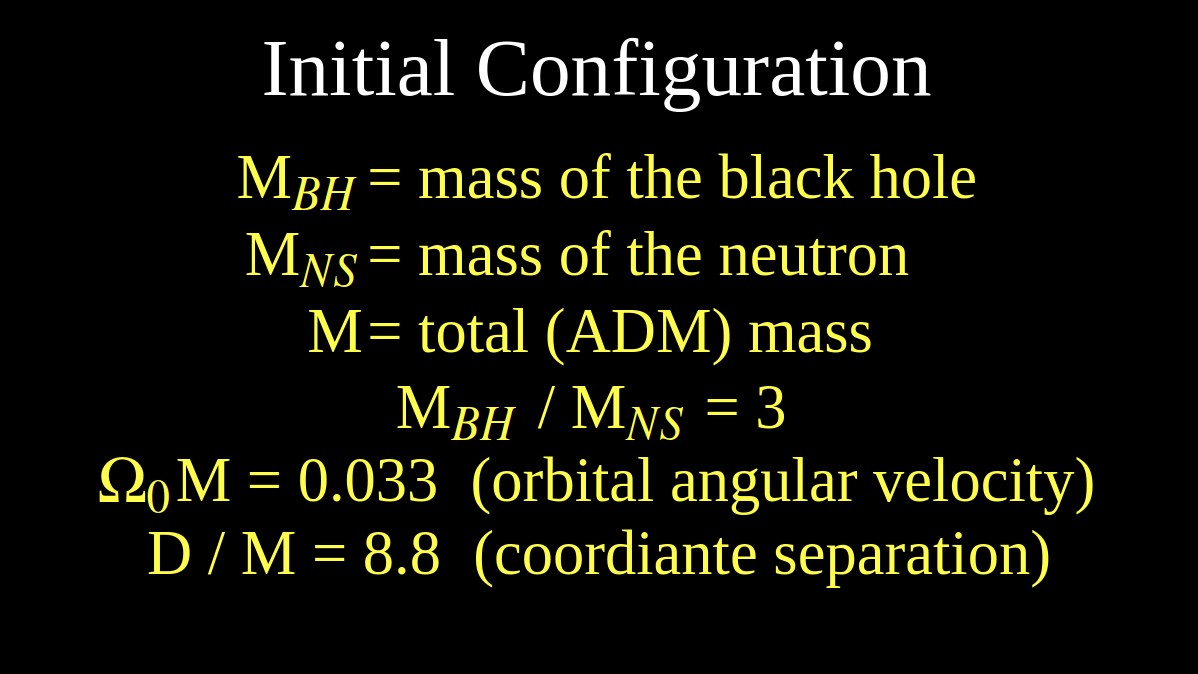Initial Configuration


The initial neutron star (NS) corresponds to an irrotational, unmagnetized, $\Gamma = 2$ polytrope. We evolve the hydrodynamic and metric fields of the binary until two orbits prior to tidal disruption, at which point the NS is seeded with a dynamically weak, dipolar B-field generated by the vector potential $A_\phi$ which approximates the vector potential of a current loop. We choose the current and radius of the loop such that in the interior the maximum value of the ratio of magnetic to gas pressure is $\beta^{-1} = 0.05$, which is dynamically weak and does not affect the inspiral and merger. The field in the exterior magnetosphere is strong, with $\beta^{-1} \lesssim 100$, and mimics the force-free (pulsar-like) conditions characterizing such a region.
 |
 |
For this case the binary has a mass ratio of $q = M_{BH}/M_{NS} = 3$. The black hole's spin is aligned with the orbital angular momentum and the spin parameter $a/M$ is varied. The magnetic dipole field is aligned with the spin axis, except in case D, where it is tilted by 90 degrees.
 |